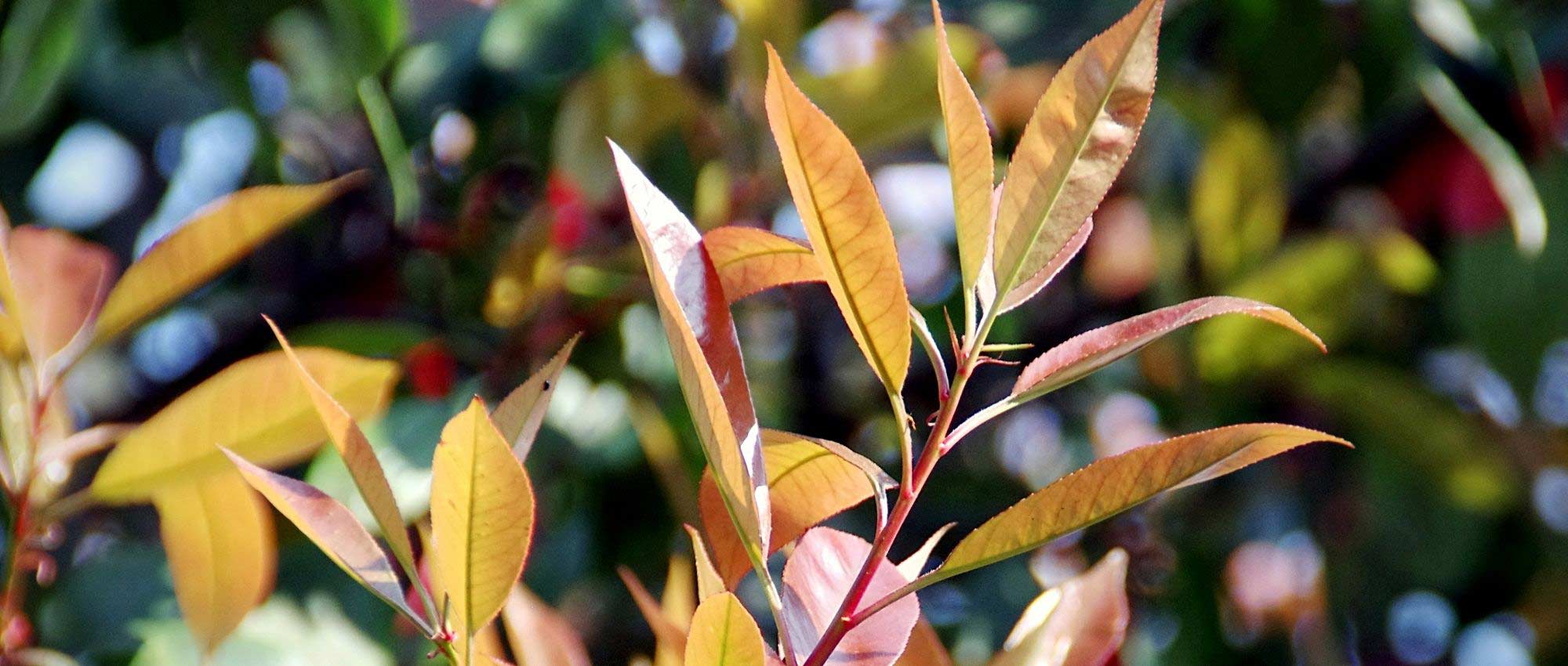
8 evergreen bushes with rapid growth for a quickly screening hedge!
Discover our selection!
Contents
By keeping their leaves in winter, evergreen bushes remain decorative all year round. Some of them also stand out for their particularly rapid growth! Thus, these hardy evergreen bushes with rapid growth are perfect for creating an all-year screening hedge in no time, even in winter! This is the case, for example, with Laurier-palme, Photinia, Pyracantha or Lonicera nitida. Moreover, because they grow quickly, these bushes generally tolerate pruning very well. They can easily be used to structure the garden, create borders, hedges or even topiary, depending on variety. Also, if you are looking for solutions for shadier areas, there are evergreen bushes with rapid growth for shade that are just as effective at greening those spaces. Most of these plants are relatively versatile, hardy and easy to grow. Discover our selection of the best fast-growing evergreen bushes and how to grow them successfully in the garden!
Elaeagnus x ebbingei : a fast-growing champion
Benefits of Elaeagnus x ebbingei
Elaeagnus ebbingei, also called Chalef, is a dense, bushy bush with compact foliage, perfect for creating windbreak hedges and screening from prying eyes. Its growth is impressive, at around 50 cm per year, sometimes a little more! Very hardy, it tolerates repeated pruning without difficulty. Beyond its robustness, it offers stunning foliage: entire, elliptical leaves ranging from dark green to silvery grey. Some varieties, such as ‘Limelight’ or ‘Eleador’, even display very bright variegated foliage.
In autumn it bears small cream-white bell-shaped flowers, discreet but deliciously scented and melliferous, making it a real treat for bees. Then come the fruits, edible and much loved by birds. At ripeness, Elaeagnus can reach up to three metres in height!
Planting advice for Elaeagnus x ebbingei
For your Elaeagnus to thrive, place in sun or partial shade. When planting, leave at least 80 cm between specimens so they have room to develop properly. This bush is a true toughie: it tolerates cold down to -20 °C, sea spray, drought and even poor soils. A genuine all-terrain garden plant, which also suits coastal locations perfectly!
Care for Elaeagnus x ebbingei
Elaeagnus care is ultra-simple. You can prune twice a year, in June and January, to keep a neat hedge. But if you prefer a more natural style, no problem: it is just as attractive left to grow freely! Its tolerance of repeated pruning makes it an excellent choice for gardeners who enjoy low-stress gardening.
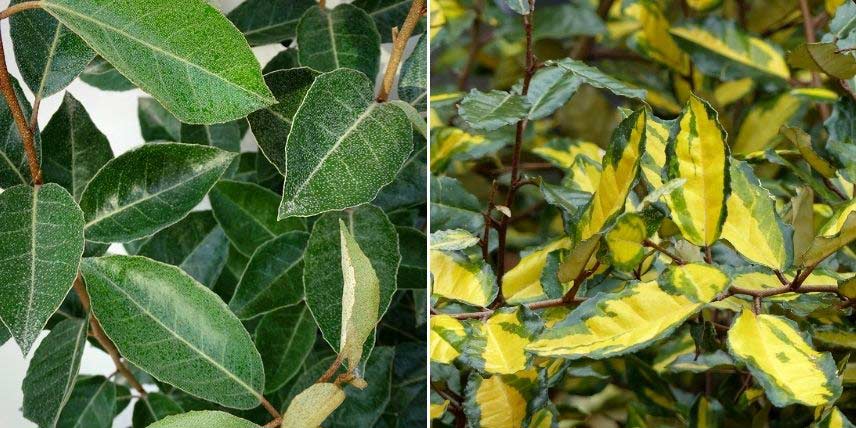
Foliage of Elaeagnus x ebbingei and that of variety ‘Limelight’
Prunus laurocerasus: compact and easy to grow
Advantages of Prunus laurocerasus
Also known as Cherry laurel or palm laurel, Prunus laurocerasus is a classic choice for creating dense, screening hedges. It charms with its evergreen, glossy and leathery foliage, and with its rapid growth of around 50 cm per year. Its large elliptical leaves, a deep dark green, provide an attractive display of greenery all year round.
In spring, around May, the bush is covered with scented inflorescences about 10 cm long, made up of small creamy-white flowers. In summer they give way to ovoid fruits, much appreciated by birds. Vigorous and robust, it can reach up to 4 metres in height at ripeness.
Planting advice for Prunus laurocerasus
To succeed in planting your Prunus laurocerasus, allow 80 cm to 1 metre between each young plant if you want to form an attractive hedge. Regarding aspect, it is undemanding: it tolerates both sun and partial shade, with a preference for the latter. It gets by with ordinary soil, provided it is not too calcareous.
Tip: if you like its style but are looking for an alternative, consider Prunus lusitanica, also called Portuguese laurel, which resembles it closely!
Care of Prunus laurocerasus
To keep your Cherry laurel neat, you can prune it twice a year. However, avoid using a hedge trimmer, which would damage its large leaves. Prefer instead a light pruning with pruning shear or shear to preserve the beauty of its foliage.
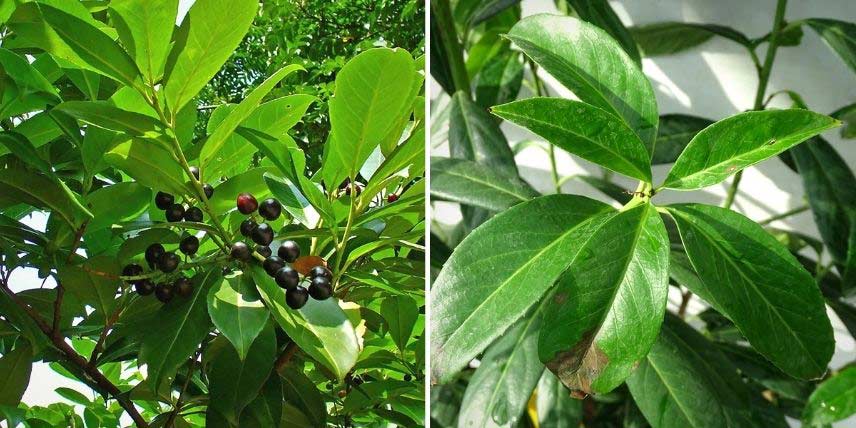
Foliage of Prunus laurocerasus (photo H. Zell) and of variety ‘Caucasica’
Lonicera nitida: a clever alternative to box
Benefits of Lonicera nitida
Native to China, the Lonicera nitida is an adorable honeysuckle with a bushy habit and ultra-dense foliage, perfect for forming hedges or creating pretty topiaries. Its small, dark green, thick leaves of around 1 cm strongly resemble box — which is why it is often used as an alternative! There are also very decorative variegated varieties, such as ‘Lemon Beauty’ or ‘Silver Beauty’.
In spring it produces discreet cream-white bell-shaped flowers, not very conspicuous but charming. At ripeness, without regular pruning, it can reach up to 2 metres in height and width. Growth is rapid: expect about 40 to 50 cm per year once well established.
Planting advice for Lonicera nitida
Lonicera nitida prefers deep, cool but well-drained soil. In terms of aspect, it thrives equally well in gentle sun or semi-shade. It is very tolerant: it accepts chalky conditions, frequent pruning, and even air pollution, making it ideal for urban planting.
To form a hedge, allow a minimum spacing of 50 cm between each young plant to give them enough room to develop well.
Care of Lonicera nitida
This honeysuckle is very easy to care for! You can prune it two to three times a year depending on the desired effect: regular pruning helps maintain a neat shape, ideal for hedges and topiaries. But if you prefer a more natural style, you can also let it grow freely or even keep it in a pot on a terrace.
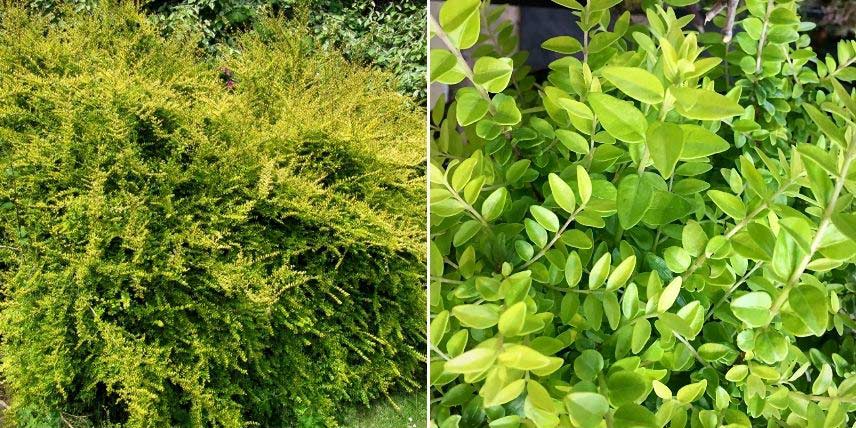
Lonicera nitida ‘Baggesen’s Gold’ (photo by Leonora Enking) and Lonicera nitida ‘Briloni’ (photo by Megan Hansen)
Photinia x fraseri: perfect for a screening hedge
Advantages of Photinia x fraseri
Photinia x fraseri is a bush as easy to grow as it is striking, thanks to its bright red young shoots that contrast nicely with mature dark green foliage. Its large leathery, glossy, elliptical leaves reach about 8 cm in length. Over time, the young shoots change from bright red to coppery, then bronze, bright green and finally dark green.
Photinia, with its rapid growth and evergreen foliage, is an excellent choice among evergreen bushes with shallow roots for forming hedges or ornamental beds without worrying about damaging underground infrastructure.
The best-known variety is photinia ‘Red Robin’, but there are also variegated forms such as ‘Pink Marble’, or with dentate leaves, like ‘Magical Volcano’. In spring, around April, Photinia bears umbels of small creamy-white flowers, melliferous and inconspicuous, adding further charm to its flowering.
With its dense foliage, it quickly forms a highly effective screening hedge, yet it is equally attractive as a specimen plant, in a bed or even in a large container on a terrace!
Planting advice for Photinia x fraseri
Photinia prefers sun or partial shade and grows in almost any type of soil, provided it is well drained, not too heavy (no heavy clay!) and not excessively calcareous. As a hedge, it can be combined perfectly with other bushes to create a mixed hedge full of colour and diversity.
In size, it can reach up to 3 metres in height with about 2 metres of spread. There is also a dwarf variety, ‘Little Red Robin’, which stays compact, not exceeding 1 metre in height: ideal for small spaces!
Care for Photinia x fraseri
Easy to care for, Photinia tolerates frequent pruning very well, which encourages its colourful young shoots and maintains an attractive silhouette. You can also let it grow freely for a more natural effect. Its growth is rapid: it produces shoots of 40 to 60 cm each year depending on conditions.
Tough and hardy, it requires little maintenance and adapts easily to many situations.
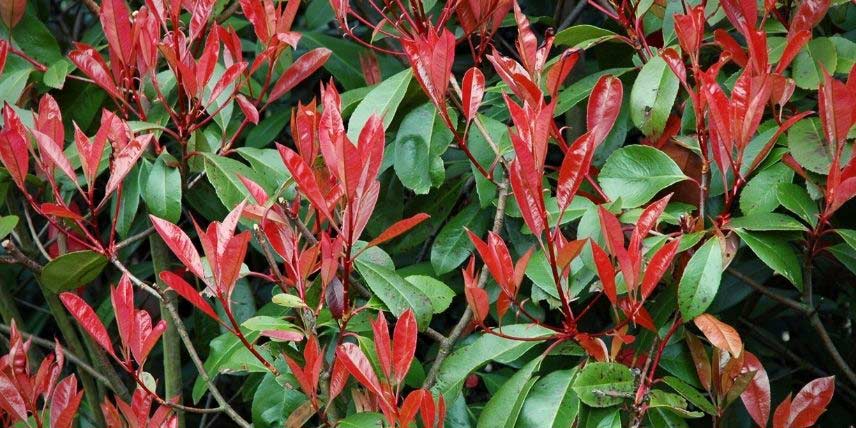
Photinia x fraseri ‘Red Robin’
Griselinia littoralis: ideal for coastal gardens
Benefits of Griselinia littoralis
Native to New Zealand, Griselinia littoralis is a dense bush much appreciated for its superb light-green foliage, bright and fresh all year. Its thick, almost succulent, shiny leaves of ovate shape give it a highly decorative appearance.
Growth is fast, with around 50 cm gained per year, sometimes more depending on conditions. It can reach up to 3 metres in height at ripeness. Chosen mainly for its foliage, its flowers, although melliferous and useful to pollinating insects, remain very inconspicuous. After flowering, female plants produce small black berries.
Planting advice for Griselinia littoralis
Griselinia likes sun and well-drained soils, even sandy, deep and not too calcareous. Once established, it tolerates drought without problem. Ideal by the sea, as it resists sea spray very well.
Be careful however: it fears cold winds and its hardiness stops around -10 °C. It is therefore better suited to mild climates. In cooler regions, better to grow it in a pot and bring it under shelter during winter.
Care for Griselinia littoralis
Griselinia requires little care. A light pruning may be enough to keep an attractive shape, but it is also very pretty left to grow freely. In mild climate, it soon becomes a fine structural element in the garden, whether as an informal hedge, as a specimen, or even in a container on a sheltered terrace.
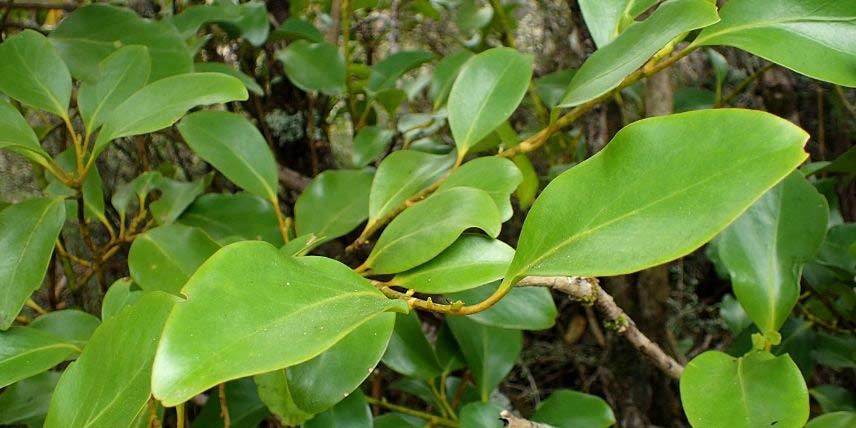
Griselinia littoralis (photo Krzysztof Ziarnek, Kenraiz)
Escallonia: abundant flowering
Advantages of Escallonia
Escallonia is a superb ornamental bush that lights up summer with its generous flowering, generally pink-red, sometimes white depending on the varieties. Its small five-petalled tubular flowers add a great deal of charm to the garden.
Leaves are small, dark green, glossy, ovate and nicely dentate. Some varieties, such as Escallonia ‘Gold Ellen’, stand out with striking golden foliage! There is a great diversity of Escallonias: some reach up to 3 metres tall, while others remain very compact, around 1 metre.
Growth varies by variety, ranging from 25 cm to 40 cm per year once well established.
Planting advice for Escallonia
Escallonia loves heat and sun! It tolerates sea spray, making it an excellent choice for coastal gardens. However, it is somewhat tender, hardy to around −10 °C.
If you live in a cooler area, choose a spot well sheltered from cold winds, or grow it in a large container so it can be moved under cover in winter. Soil must be well drained and not overly calcareous.
As a living hedge, in borders or even in a pot on the terrace, it will stand out for its display!
Care of Escallonia
Easy to grow, Escallonia requires little maintenance: light pruning after flowering is enough to keep a neat, compact shape. With a warm, sunny position, it will reward you with an even more generous flowering year after year!
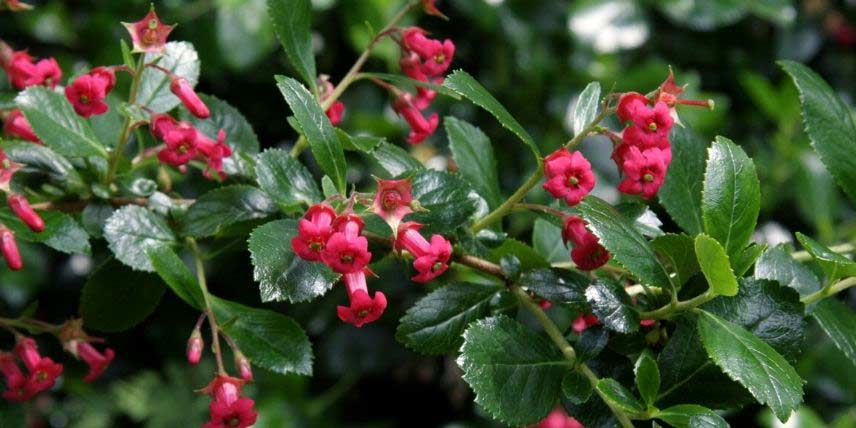
Escallonia rubra ‘Crimson Spire’ (photo Ben Rushbrooke)
Pyracantha: an impenetrable barrier
Advantages of Pyracantha
Also called « fire bush », Pyracantha is perfect for creating defensive hedges thanks to its formidable sharp thorns. It quickly forms an impassable barrier while remaining very decorative.
In spring, in May–June, it is covered with countless small white flowers, gathered in fragrant, melliferous clusters. In autumn, the bush is adorned with bright berries in warm colours — red, orange or yellow depending on varieties — much appreciated by birds.
Depending on varieties, it reaches between 1 and 4 metres in height. Its growth is fairly rapid, between 40 and 50 cm per year for the largest forms.
Pyracantha planting advice
Undemanding, Pyracantha thrives in full sun or partial shade. It adapts to almost all types of soils, even poor or stony. It is also very hardy: it tolerates cold, wind, drought and even air pollution.
You can plant it as a free-standing or defensive hedge, or train it against a wall for a graphic, elegant effect.
Pyracantha care
Regarding care, Pyracantha is really easy to look after! Light pruning allows control of its shape and prevents it becoming too invasive. If left to grow freely, it will provide a superb display between spring flowering and autumn fruiting.
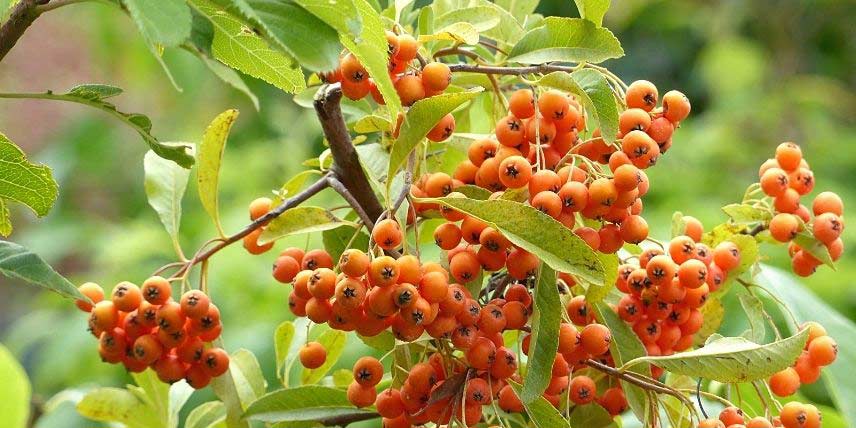
Pyracantha ‘Golden Charmer’
Ligustrum japonicum: low-maintenance and beautiful flowering
Advantages of Ligustrum japonicum
Also called Japanese privet, Ligustrum japonicum is a dense, decorative bush that is very simple to to grow. It charms with its dark green, glossy foliage, coppery young shoots, and its beautiful summer flowering.
From July, it is covered in panicles of small scented white flowers that are very attractive to pollinators. Late in the season, these flowers give way to decorative black berries. Compact and vigorous, it can reach up to 2.50 metres in height and width, making it perfect for dense, screening hedges.
Planting advice for Ligustrum japonicum
Japanese privet grows quickly, about 40 to 50 cm per year. It prefers sunny or semi-shaded positions, and adapts easily to fresh soil, even calcareous. To retain soil moisture, mulch the base of the plant.
If planting as a hedge, leave about 80 cm between each young plant so they can develop well. This privet is also perfectly hardy, resistant down to –15 °C, so it suits many regions.
Care of Ligustrum japonicum
To keep it compact and bushy, annual pruning is recommended. Simply cut about half of the new shoots each year. Very versatile, it can also be shaped as topiary to add a structured, elegant touch to borders or ornamental garden.
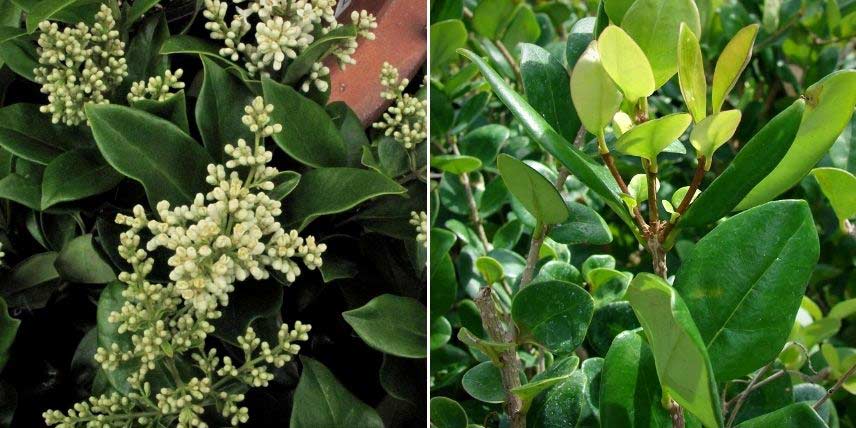
Ligustrum japonicum (photo Megan Hansen) and Ligustrum japonicum ‘Texanum’ (photo Forest and Kim Starr)
Discover all our fast-growing evergreen bushes.
View all →Further reading
Discover our other tips:
- Subscribe!
- Contents
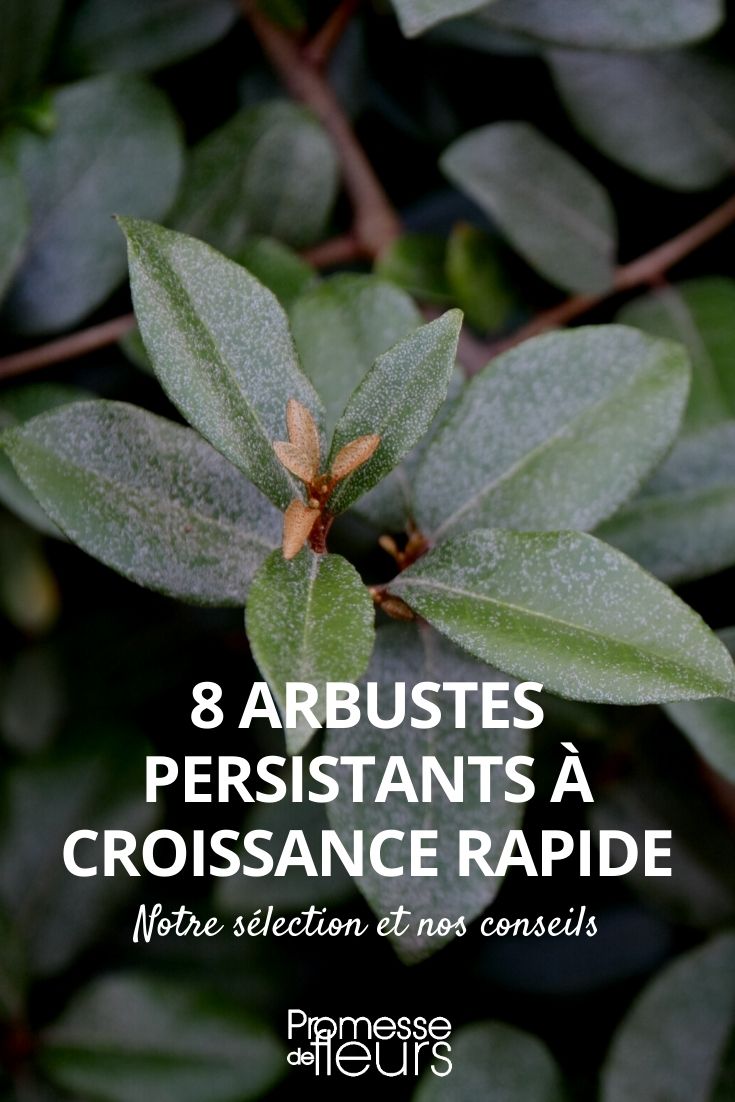




































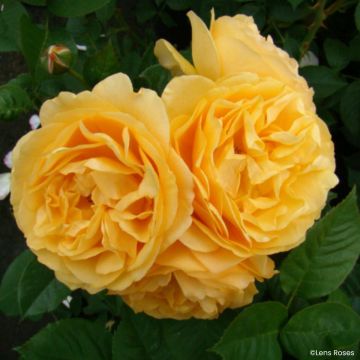


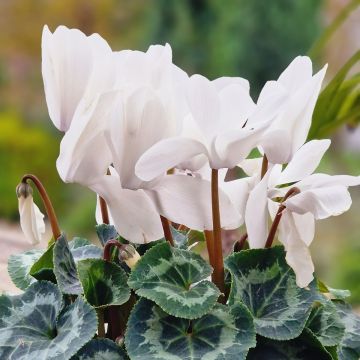
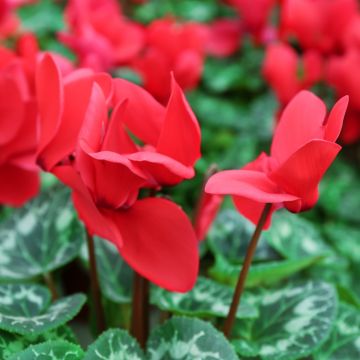
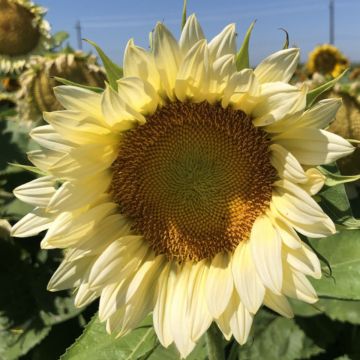
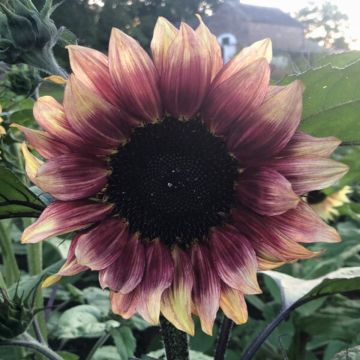
Comments